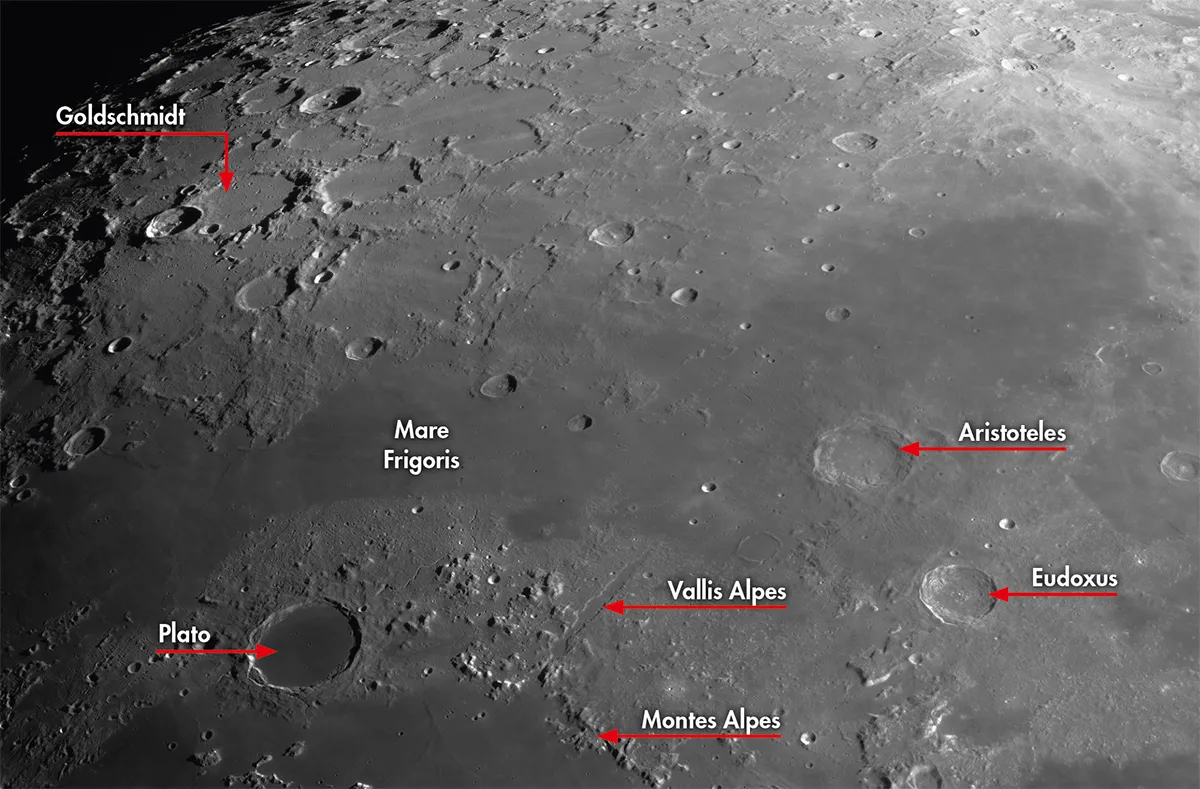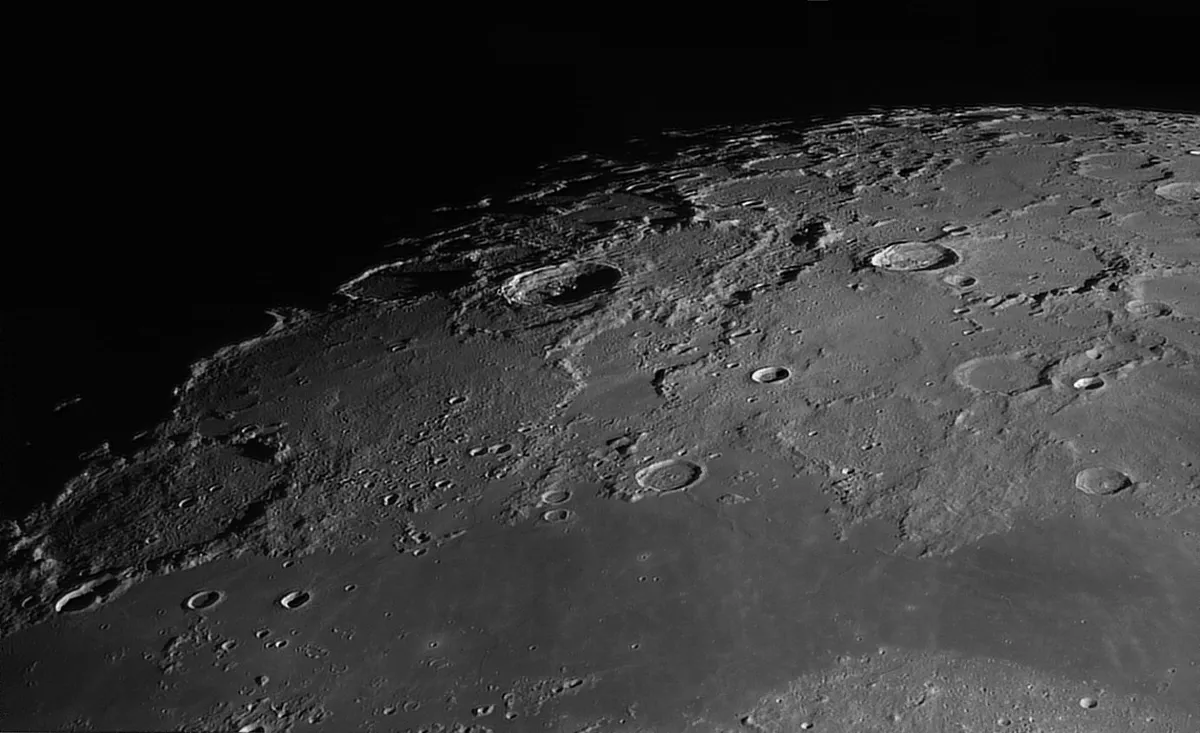The airless Moon tends to conjure a rather cold, inhospitable image. It’s true that the Moon is physically cold when its surface is enshrouded by the dark of a lunar night: at such times the surface temperature drops to around –153ºC.
However, during the day the surface temperature can rise to over 100ºC, so the image of a frigid world is perhaps inappropriate.
Despite this, the Mare Frigoris manages to hold onto the image pretty well – the name literally means ‘Sea of Cold’.
For more info on lunar observing, read our guides on how to observe the Moon and the best features on the Moon.

This long, thin lunar sea stretches east to west along the northern part of the Moon’s disc for 1,400km.
Contrast this with its average width of 250km; while most of the major lunar maria or seas appear circular or elliptical, this one is a clear exception.
Facts aboutMare Frigoris
- Size:1,400x250km
- Age: Approximately 3.9 to 4.6 billion years
- Location: Latitude 56.0°N, longitude 0.0°E
- Recommended observing equipment:4-inch telescope

The central and western parts look like they curve concentrically with the Mare Imbrium, while the portion to the east looks as if it’s concentric with the Mare Serenitatis.
With a good imagination, the Mare Frigoris forms the eyebrows of the Man in the Moon.
Unlike many of the other lunar seas, this one is largely devoid of features such as rilles, faults and domes. Most of its feature set is made up of impact craters.
These co-exist with lines of lighter ejecta laid down by larger impacts. Of particular note are the dramatic rays laid across the floor of the mare by 124km-wide crater Goldschmidt, which lies farther north.

The largest, ‘local’ crater is 90km-wide Aristoteles, which sits in the south of the eastern portion of Frigoris.
This is a very well-defined feature in its own right, with high, terraced walls and ejecta that spreads across the mare floor. Frigoris appears to curve below Aristoteles towards 70km-wide crater Eudoxus.
To the west is 41km-wide crater Harpaulus. Though it is less than half the size of Aristoteles, it manages to hold its own by virtue of the fact that it sits centrally within a darker area of Frigoris to the west.
The number of craters that pockmark the mare floor varies; there are more craters visible in the eastern region than in the centre, indicating that the eastern mare floor is slightly older.

There are also many famous features to be seen along the mare’s southern edge. These include the Lunar Alps, 109km-wide Plato crater and the Sinus Iridum.
To the north, the huge 160km-walled plane known as J Herschel is worth a look.